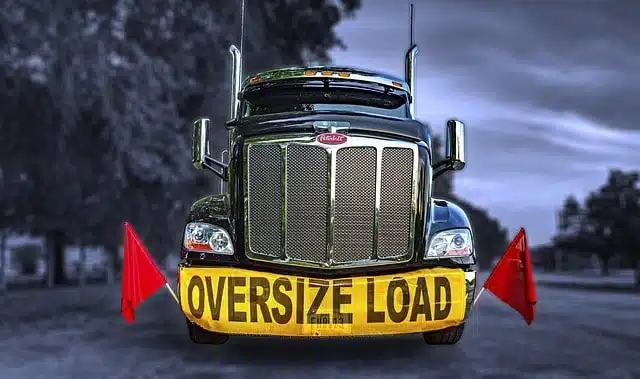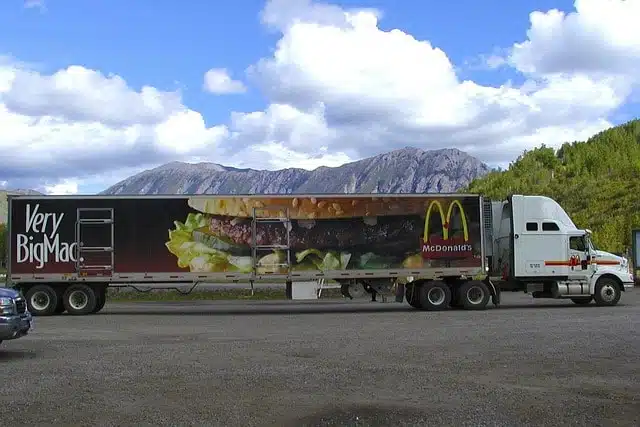The trucking industry moves over 11 billion tons of freight annually, generating nearly $906 billion in revenue, yet many transportation professionals struggle to keep pace with rapidly changing market dynamics. In an industry where margins are razor-thin and competition is fierce, having access to the right trucking insights can determine the difference between a successful business and one that fails to adapt.
Staying updated with the latest industry news is crucial, as it helps professionals find new opportunities, resources, and insights to remain competitive in the trucking sector.
Today’s transportation landscape demands more than just the ability to drive trucks and deliver goods. Whether you’re an owner operator managing your own business, a fleet manager overseeing day to day operations, or an executive at one of the major trucking companies, understanding current market trends, technology innovations, and regulatory changes is essential for making informed decisions that drive performance and profitability.
This comprehensive analysis provides the critical trucking insights every transportation professional needs to navigate 2025’s challenges and opportunities. From emerging technology solutions that can help you make more money to workforce strategies that improve retention, we’ll explore the key intelligence areas that successful industry leaders focus on to maintain their competitive edge.
Current Market Trends Shaping the Trucking Industry
Understanding current market dynamics provides the foundation for strategic decision-making in transportation. The industry has experienced significant volatility, but recent trends indicate stabilization and new opportunities for those who understand how to capitalize on changing conditions. Additionally, change in employment status and career roles—such as shifts between independent contractor and employee classifications—continues to shape the trucking industry, requiring professionals to adapt.
Freight Rate Stabilization and Recovery

After experiencing considerable instability throughout 2023, freight rates have begun to stabilize, offering renewed opportunities for carriers to improve their financial performance. Spot market freight rates showed an 8-12% improvement in Q4 2024 compared to their mid-2023 lows, driven by modest e-commerce demand resurgence and inventory level adjustments among major retailers.
This recovery is particularly significant for owner operators who depend heavily on spot market rates. The stabilization allows for better predictability in earnings and makes it easier to plan routes and manage costs effectively. Drivers now have a lot more control over their financial planning and operational decisions. For larger trucking companies, the improved rate environment provides opportunities to renegotiate contracts and enhance profitability across their operations.
The trucking sector continues to dominate freight movement, handling over 72% of national tonnage. Industry projections indicate steady growth, with freight volumes expected to reach nearly 14 billion tons by 2035, while revenues could grow from $906 billion in 2024 to an estimated $1.46 trillion by 2035.
Critical Driver Shortage Challenges
The driver shortage remains one of the most pressing issues facing the industry, with approximately 78,000 positions unfilled nationwide according to American Trucking Association data. This shortage creates both challenges and opportunities for different segments of the transportation sector.

For trucking companies looking to hire new drivers, the shortage has led to increased competition for qualified candidates. Starting pay for new drivers has risen to $55,000-$65,000 annually, while experienced owner operators can earn between $120,000-$180,000 depending on their operational efficiency and route selection.
The aging workforce compounds this challenge, with insufficient numbers of younger people entering the profession. Many new drivers often start in related roles or work with different companies to gain experience before advancing in their trucking careers. However, this creates opportunities for those already in the industry to command higher pay and better working conditions as companies compete for talent. Drivers can also choose between different routes, equipment, or employment classifications to best suit their preferences and career goals.
Technology Adoption Acceleration
Electric truck adoption is accelerating among major carriers, with companies like FedEx and UPS rapidly expanding their EV fleets. While only about 2% of trucks on the road are electric as of 2025, environmental mandates and long-term cost savings are driving increased investment in alternative fuel vehicles.
Autonomous trucking technology is also progressing, with companies like Waymo conducting commercial pilot programs in Sun Belt corridors. These developments demonstrate Level 4 autonomy under supervised conditions, indicating the technology is moving closer to widespread commercial viability.
For transportation professionals, staying informed about these technology trends is crucial for understanding future industry dynamics and planning long-term equipment investments.
Technology Innovations Transforming Operations
Technology continues to revolutionize how trucking companies manage their fleets and optimize performance. Understanding and implementing the right technology solutions can significantly impact operational efficiency and profitability. These innovations also enable professionals to set their own schedules and optimize work routines for greater flexibility.
AI-Powered Route Optimization

Artificial intelligence has become a game-changer for fleet operations, with AI-powered route optimization systems enabling fleet operators to reduce fuel costs by 15-20% on average. These systems minimize idle time, provide real-time rerouting around congestion, and optimize backhaul opportunities to maximize equipment utilization.
For owner operators working to control costs and increase their paycheck, implementing AI-powered routing tools can provide a significant competitive advantage. The technology helps determine the most efficient routes while considering factors like fuel costs, delivery windows, and traffic patterns.
Advanced telematics platforms now provide continuous, real-time data on both driver behavior and vehicle performance, promoting efficiency and safety while reducing insurance claims and maintenance events. This data helps fleet managers understand patterns and make informed decisions about driver training, equipment maintenance, and operational improvements.
Blockchain and Mobile Platform Integration

Blockchain technology is gaining adoption, especially among large shippers and third-party logistics providers, for secure freight tracking, automated document verification, and payment processing. This technology enhances transparency and reduces the administrative burden associated with traditional paperwork processes.
Mobile platforms have become increasingly important for owner operators, providing tools that facilitate load booking, invoicing, and rapid payment collection. These applications streamline business operations and make it easier for independent drivers to manage their administrative tasks while focusing on driving and customer service.
Predictive Maintenance Systems
Predictive maintenance technology leverages telematics and sensor data to reduce unscheduled breakdowns by up to 30%, significantly cutting downtime and costly emergency repairs. These systems analyze engine diagnostics, oil chemistry, vibration patterns, and other vehicle data to identify potential issues before they become major problems.
For fleet managers, predictive maintenance represents a substantial opportunity to control costs and improve equipment reliability. The technology allows maintenance teams to schedule repairs during planned downtime rather than dealing with unexpected breakdowns that can disrupt customer deliveries and damage relationships.
Fleet Management Software Solutions
Cloud-based fleet management systems have become the standard for mid-size and large carriers, integrating dispatch, billing, document management, and compliance into unified dashboards. Companies like Focused Compliance Group provide scalable platforms that help carriers manage their operations more efficiently.
Real-time GPS tracking enhanced with geofencing capabilities not only boosts operational visibility but also enhances cargo security by sending automated alerts if a vehicle deviates from its approved route. This technology provides peace of mind for both carriers and shippers while helping to prevent cargo theft.
Automated Hours of Service logging, required under the Electronic Logging Device mandate, is central to reducing compliance violations that can carry substantial financial penalties. Fuel card integration provides detailed expense tracking and fraud protection, allowing fleet managers to monitor spending patterns and identify potential issues quickly.
Regulatory Updates and Compliance Requirements
Staying current with regulatory changes is essential for maintaining compliance and avoiding costly penalties that can significantly impact profitability. Recent updates have introduced new requirements that affect all areas of trucking operations. To ensure compliance with these new safety and regulatory standards, companies may send representatives to visit workplaces for training or compliance checks.
Enhanced Drug and Alcohol Testing Protocols

For trucking companies, these enhanced protocols require updated policies and procedures to ensure compliance. The changes affect hiring processes, ongoing monitoring, and documentation requirements that must be carefully managed to avoid violations.
Electronic Logging Device Enforcement

The technology has become an integral part of day to day operations for most carriers, but proper implementation and training remain critical for maintaining compliance and avoiding penalties that can impact the bottom line.
State-Level Autonomous Vehicle Regulations
State regulations regarding autonomous vehicle testing and operation vary significantly across the country. Some states like Texas and Arizona permit commercial autonomous trucking without a safety driver, while others maintain more restrictive pilot program frameworks or outright bans.
This regulatory patchwork requires major carriers to carefully select pilot routes and operational partners when exploring autonomous technology. Understanding the regulatory landscape in different areas helps carriers plan their technology adoption strategies and expansion plans.
Environmental and Insurance Requirements
Environmental regulations at both federal and state levels are accelerating the adoption of lower-emission vehicles. California’s Advanced Clean Fleets Rule and proposed national NOx standards encourage fleet upgrades to natural gas, hybrid, and electric vehicles.
Insurance requirements have tightened in parallel, with minimum coverages increasing and premiums rising 8-15% annually. The type of insurance coverage required can significantly impact both the costs and the benefits available to carriers and drivers. This reflects higher claim frequency and larger settlements for catastrophic accidents, making safety a critical focus area for controlling costs.
Financial Performance Metrics and Cost Management
Understanding key financial metrics and implementing effective cost management strategies is essential for maintaining profitability in today’s competitive environment. Recent industry trends show increasing pressure on margins, making financial management more critical than ever. Successful operators often have to give up certain things or make sacrifices, such as personal luxuries or discretionary expenses, to keep their business profitable.
Operating Ratio Challenges
Operating ratios have increased to 95-98% in 2024 from historical averages of 92%, reflecting elevated operating costs across multiple categories. This shift indicates that carriers are spending more to generate the same revenue, making cost control and efficiency improvements essential for maintaining profitability.
For owner operators, understanding and monitoring operating ratios helps determine the health of their business and identify areas for improvement. Successful operators focus on controlling their largest expense categories while maximizing revenue opportunities.
Major Cost Categories and Management
Fuel remains a massive expense, accounting for roughly 25-30% of long-haul carrier costs. With diesel consumption at 54 billion gallons annually in the U.S., even small improvements in fuel efficiency can have significant financial impact.
Insurance premium escalation is driven by rising accident rates, nuclear verdicts, and increased cargo theft. Premiums are rising 8-15% annually, making safety programs and risk management essential for controlling this major expense category.
Maintenance costs are climbing as the average age of fleet vehicles reaches 7.2 years. Older equipment requires more frequent repairs and parts replacement, making preventive maintenance and equipment replacement planning critical for cost control.
Cost Category
Percentage of Total
Management Strategies
Fuel
25-30%
Route optimization, fuel-efficient vehicles, hedging
Labor
30-35%
Retention programs, efficiency training, performance incentives
Insurance
8-10%
Safety programs, driver training, claim management
Maintenance
10-15%
Preventive maintenance, predictive analytics, newer equipment
Administration
15-20%
Technology automation, process optimization
Revenue Optimization Strategies
Dedicated contract freight provides rates 10-15% higher than prevailing spot market prices while delivering revenue stability throughout the year. These arrangements offer predictable income that helps with financial planning and cash flow management.

Backhaul optimization continues to offer opportunities for improving profitability by reducing empty miles, which represent around 35% of total truck mileage industry-wide. Enhanced load-matching algorithms and regional routing strategies help minimize deadhead miles and maximize equipment utilization.
Driver Workforce Dynamics and Retention
The driver workforce represents both the greatest asset and the biggest challenge for most trucking companies. Employment status directly impacts access to benefits such as health insurance, workers’ compensation, and other workplace perks, with employee drivers typically receiving more comprehensive benefits than independent contractors. Understanding current workforce dynamics and implementing effective retention strategies is crucial for maintaining operations and controlling costs.
Turnover Rate Challenges
Average driver turnover rates reached 87% at large truckload carriers in 2024, representing a significant cost in terms of recruitment, training, and lost productivity. High turnover disrupts operations, affects customer service, and requires continuous investment in hiring and training new drivers.
For carriers, reducing turnover by even a few percentage points can have a substantial impact on profitability. The cost of replacing a driver includes recruitment expenses, training time, reduced productivity during the learning period, and potential service disruptions.
Compensation and Career Opportunities
Starting salaries for new drivers have increased to $55,000-$65,000 annually as companies compete for talent in a tight labor market. Owner operators who manage their business effectively can earn between $120,000-$180,000, depending on their operational efficiency, route selection, and specialization.

Retention Strategies and Work-Life Balance
Many carriers are implementing flexible scheduling, more frequent home time, and wellness programs to address lifestyle challenges and improve retention. These initiatives recognize that drivers value quality of life alongside competitive pay. Drivers must also decide how they want to live and balance their work commitments with personal priorities.
Partnerships with community colleges and trade schools are expanding, often involving tuition reimbursement, paid apprenticeships, and guaranteed job placement after graduation. These programs help create a pipeline of new drivers while providing career advancement opportunities.
Technology integration in training programs appeals to younger workers who expect modern tools and systems. Gamified training approaches and clear career advancement pathways serve as key differentiators in recruiting efforts.
Supply Chain Integration and Customer Relationships
The relationship between carriers and shippers continues to evolve beyond simple transactional arrangements toward strategic partnerships that benefit both parties. Understanding these dynamics helps carriers position themselves for long-term success. Collaborating with a dedicated team of professionals can further enhance business performance and support strategic goals.
Strategic Partnership Development
Shipper-carrier relationships are evolving toward multi-year strategic alliances that emphasize shared data, risk mitigation, and continuous improvement. These partnerships provide stability for carriers while offering shippers reliable capacity and service.
For carriers, developing strong customer relationships leads to more predictable revenue and the opportunity to work collaboratively on operational improvements. Shippers value partners who can provide consistent service and adapt to changing requirements.
E-commerce Impact and Last-Mile Delivery
The surge in e-commerce, growing at approximately 12% annually, has created new demands for last-mile delivery services. Online retail growth requires carriers to adapt their networks for smaller, more frequent shipments and shorter delivery windows.
This trend creates opportunities for carriers who can develop capabilities in final-mile delivery, but it also requires different equipment, routing strategies, and customer service approaches compared to traditional long-haul operations.
Operational Excellence and Customer Service
Cross-docking operations and hub-and-spoke models are being refined to cut handling costs and expedite deliveries. These operational improvements help carriers provide better service while controlling costs.
Key customer service metrics, especially on-time delivery rates, have become critical KPIs for both contract renewals and new business acquisition. Carriers who consistently meet delivery commitments gain competitive advantages in the marketplace.
Real-time freight visibility, powered by API integrations and IoT devices, enables proactive communication across the shipping ecosystem. This technology improves transparency, reduces friction, and helps build stronger relationships between all parties in the supply chain.
Future Outlook and Strategic Planning
Looking ahead, several trends will continue to shape the trucking industry and create both challenges and opportunities for transportation professionals. Understanding these developments helps with strategic planning and positioning for future success. Experience in the trucking industry provides valuable perspective and skills, enabling professionals to better adapt to future changes and seize new opportunities.
Industry Consolidation Trends

For smaller carriers and owner operators, this trend presents both challenges and opportunities. While competition from larger companies increases, there may also be opportunities to partner with or sell to larger organizations seeking to expand their capabilities.
Infrastructure Investment Impact
Infrastructure investment spurred by the Infrastructure Investment and Jobs Act will improve key highway corridors, bridges, and intermodal connections over the coming years. While project timelines extend into the late 2020s and early 2030s, these improvements will eventually benefit all carriers through reduced transit times and lower vehicle maintenance costs.
Sustainability and Alternative Fuels
Sustainability imperatives are accelerating fleet electrification and alternative fuel adoption, with industry target dates generally centered around 2030 for broad EV penetration and supporting infrastructure. Carriers need to begin planning for this transition to avoid being left behind.
The shift to alternative fuels will require significant capital investment and changes to operational procedures. Early adopters may gain competitive advantages through lower operating costs and access to customers with environmental requirements.
Economic Growth Projections
The economic outlook calls for modest but stable freight growth of 3-5% annually through 2025, barring major global shocks or domestic recessions. This steady growth provides a foundation for industry expansion while avoiding the volatility that has characterized recent years.
Transportation professionals who position themselves to take advantage of this growth through strategic investments in technology, equipment, and workforce development will be best positioned for long-term success.
Key Takeaways for Transportation Professionals
These trucking insights reveal an industry in transition, with significant opportunities for those who understand and adapt to changing conditions. Success in today’s market requires a combination of operational excellence, technological adoption, and strategic thinking that goes beyond traditional approaches to transportation management.
The most successful carriers and owner operators will be those who focus on building sustainable competitive advantages through superior customer service, operational efficiency, and strategic use of technology. Whether you’re managing a large fleet or operating a single truck, understanding these market dynamics provides the foundation for making informed decisions that drive long-term success.
As the industry continues to evolve, staying informed about market trends, regulatory changes, and technological developments remains essential for maintaining competitiveness. The companies and individuals who invest in continuous learning and adaptation will be best positioned to thrive in the transportation industry’s dynamic environment.
For transportation professionals seeking to stay ahead of these trends, regularly reviewing industry publications, attending professional development events, and networking with other industry professionals provides ongoing access to the insights needed for strategic decision-making. The time you invest in understanding these market dynamics will pay dividends in improved performance and enhanced career opportunities.
